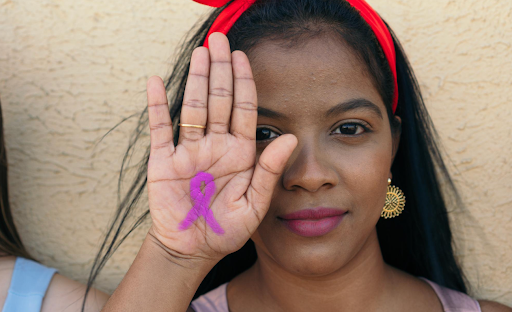New Screening Campaign Uses Technology to Transform Cancer Care for Underserved Women

Cervical cancer remains one of the leading causes of cancer-related deaths among women in South Africa and Peru, despite being highly preventable. In 2022, South Africa recorded 33.2 new cervical cancer cases per 100,000 women, well above the average of 14.2 in upper-middle-income countries. Peru reported a rate of 23.9 per 100,000.
Mortality rates in both countries reflect delayed diagnoses and gaps in routine screening. In South Africa, the cervical cancer mortality rate reached 19.0 per 100,000 in 2022, while Peru recorded a rate of 12.1. Women in rural and peri-urban communities are disproportionately affected due to systemic barriers such as limited healthcare infrastructure, lack of transportation, and low health literacy.
A Digital Tool Targets Gaps in Early Detection
To address these disparities, a new cervical cancer screening campaign led by the Movement Health Foundation is using digital tools to improve access to screening and cancer information. The project is active in both South Africa and Peru and involves collaboration with public health departments, local universities, and civil society groups.
In South Africa's Eastern Cape Province, the initiative features a multilingual Progressive Web App developed in partnership with Nelson Mandela University's Centre for Community Technologies. Designed with user accessibility in mindhe app offers voice input, offline access, and will provide guidance to nearby screening facilities once the maps are added. It aims to support women who face challenges navigating the health system.
HIV and Cancer Risk: A Tightly Linked Problem
South Africa's high HIV prevalence exacerbates the country's cervical cancer burden. Research indicates that 30–40% of cervical cancer cases occur in women living with HIV, due to immunosuppression and delayed screening uptake. Data from some primary health clinics show that 65% of women only receive cervical cancer screening more than 48 weeks after starting antiretroviral therapy.
"These are preventable deaths," said Bogi Eliasen, Executive Director of the Movement Health Foundation. "We know the risk factors. We know that early screening works. The issue is getting the right tools into the right communities."
Between 2000 and 2019, South Africa's cervical cancer screening program prevented an estimated 8,600 cases. However, coverage remains uneven, and delays persist. According to projections by the World Health Organization, meeting screening and vaccination targets could help South Africa reach cervical cancer elimination thresholds by 2077.
Barriers Extend Beyond the Clinic
Delays in diagnosis are not solely caused by lack of clinics or resources. Many women avoid screening due to stigma, fear of pain, or reluctance to see male providers. Others cite long wait times and transportation challenges. In South Africa, the median waiting time from diagnosis to mastectomy is 18.4 weeks.
In Peru, where cancer services are concentrated in Lima, rural women often travel hours for appointments. Indigenous and Afroperuvian women face greater disparities in access and outcomes. A 2021 study noted that many Peruvian women rely more on peer support groups than on physicians to understand their condition and treatment options.
Breast Cancer Adds to the Burden
While cervical cancer is the most fatal, breast cancer is the most commonly diagnosed cancer in both countries. In South Africa, 47.8 new breast cancer cases were recorded per 100,000 women in 2022, compared to 39.3 in Peru. The mortality trend is also concerning. South Africa's breast cancer death rate rose from 5.85 to 11.53 per 100,000 between 1990 and 2021.
Disability-adjusted life years (DALYs), a key indicator of disease burden, also rose significantly. South Africa's breast cancer DALYs increased from 196.28 to 356.86 per 100,000 over the same period, reflecting not only higher mortality but also more years lived with treatment-related complications. Survivorship care is a growing concern, especially where rehabilitation and psychological support are lacking.
Expanding the Model in Peru
In northern Peru, the Movement Health Foundation has partnered with the Lambayeque regional government to pilot a new cancer screening coordination tool. The José Leonardo Ortiz Health Center will serve as a starting point, with the goal of reaching 170,000 women.
The tool builds on a successful maternal and newborn care model launched in Cusco in 2021. It is designed to help patients and healthcare providers coordinate appointments, track test results, and reduce delays between screening and treatment.
"Improved coordination helps women get seen faster and follow through with care," Eliasen said. "But it also gives them confidence - knowing who will be there, what to expect, and what happens next."
Looking Toward National Scale
The screening campaign's pilot phase in South Africa is being implemented in all eight districts, with national expansion planned in phases. The project aligns with South Africa's National Cancer Strategic Framework and supports broader public health goals outlined in the National Development Plan 2030.
In both countries, the Movement Health Foundation hopes to use the campaign's results to inform larger policy discussions about digital health, prevention services, and long-term survivorship care. "We want to show that digital tools aren't just add-ons," Eliasen said. "They're infrastructure. They're part of how healthcare can work better."
Data-Driven Solutions in Resource-Constrained Settings
The Movement Health Foundation's screening initiative focuses on streamlining the health system's weakest links - patient tracking, information delivery, and coordination between providers. With governments and health systems facing budget constraints, the model is designed to be scalable, requiring minimal infrastructure.
While technology cannot solve every challenge in cancer care, stakeholders involved in the campaign hope that these tools will lead to earlier diagnoses, fewer missed appointments, and improved health outcomes for women who have long faced structural disadvantages in accessing care.
© Copyright IBTimes 2025. All rights reserved.


















